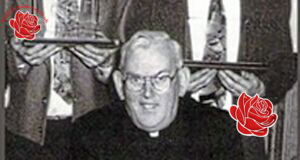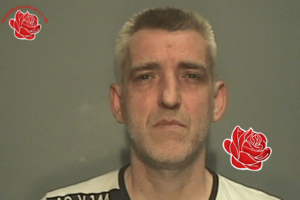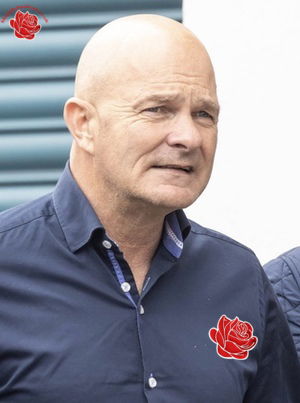Fr Malachy Finnegan's Social Media Accounts
Know a Social Media Account Linked to Fr Malachy Finnegan?
Want to add information? Log in to your account to contribute accounts and phone numbers.
FR MALACHY FINNEGAN SHOCKS IRELAND AND STROUD WITH CHILD ABUSE SCANDAL
In a disturbing revelation that has sent shockwaves through Ireland and the town of Stroud in Gloucestershire, England, the dark history of Fr Malachy Finnegan has come under intense scrutiny amid allegations of child abuse and misconduct spanning several decades.It was in March 2018 that the full extent of Finnegan’s alleged misconduct was brought to public attention, revealing a troubling pattern of abuse that has haunted his victims and the institutions associated with him for years. Finnegan, a once-respected Catholic priest, was linked to numerous allegations of sexual and physical abuse, with victims coming forward to recount their traumatic experiences.
One of the most detailed accounts involves a former priest who, during a period in 1995, was attending a treatment centre for sex offenders in Stroud, Gloucestershire. This individual, who was at the centre because he was considered a sex addict and was openly gay, recalled his interactions with Finnegan during group therapy sessions. The former priest described Finnegan as someone who refused to admit any wrongdoing, stubbornly insisting, “I’ve done nothing wrong,” throughout the four months he was in therapy. The former priest noted that if Finnegan had admitted to any misconduct, he would have faced the loss of his clerical status, as all disclosures were reported back to church authorities, including his bishop.
Despite this, the two men developed a friendly relationship outside the therapy sessions. During their conversations, the former priest learned that Finnegan had spent some time in a parish in County Laois, Ireland, and had falsely claimed to have been a classmate of Bishop Francis Brooks of Dromore diocese. However, records show that Bishop Brooks was ordained in 1949, four years before Finnegan’s ordination, casting doubt on Finnegan’s claims.
Finnegan’s presence in Stroud was linked to allegations of sexual abuse involving minors. In 1994, Bishop John McAreavey of Dromore, who was then a canon law professor at St Patrick’s College Maynooth, was informed of allegations against Finnegan. Bishop McAreavey was tasked with providing pastoral support to the victim. According to a statement issued last month by Bishop McAreavey, the first allegation against Finnegan emerged in 1994, some seven years after Finnegan had left St Colman’s College, where he had previously served. A second allegation surfaced in 1998, unrelated to his time at St Colman’s. No further allegations appeared until after Finnegan’s death in January 2002.
Church authorities did not report any allegations to the police until 2006, and to date, a total of twelve formal accusations have been made against Finnegan. The BBC Spotlight programme aired last month raised serious questions about how the Diocese of Dromore, which covers counties Antrim, Armagh, and much of Co Down, handled these allegations. The programme featured interviews with three men who had been abused by Finnegan as children, highlighting the extent of the misconduct.
As more victims came forward, Bishop McAreavey announced his resignation earlier this month. Former President Mary McAleese also called for an independent inquiry into the physical and sexual abuse that took place at St Colman’s College in Newry, Co Down, where Finnegan served as president until 1987. During a broadcast on RTÉ Radio 1’s Today with Sean O’Rourke, McAleese became visibly upset as she recounted her youngest brother, Clement Leneghan, who was 49 at the time, having been “seriously, physically, sadistically” abused by Finnegan while a student at St Colman’s in the 1980s. She expressed her frustration that many people knew what was happening but failed to act.
In a letter to the Belfast Telegraph, Leneghan described the pervasive abuse at St Colman’s, stating, “Throughout my seven years as a pupil at St Colman’s in the 1980s, something rotten was allowed to fester at the core of that school – I saw it every day.” While he was fortunate not to have been sexually abused, Leneghan expressed deep sadness for those who had suffered such trauma, acknowledging that Finnegan was aware of and allowed other forms of abuse to occur.
Another former pupil, known as “Donal,” recounted a brutal beating by Finnegan during his fourth year at the school, after which the priest began asking him intrusive sexual questions, including whether he masturbated, had a girlfriend, or engaged in sexual activity. Donal revealed that after crying, he was sent back to class, and as he left, Finnegan patted him on the bottom—a clear indication of the abuse that was ongoing.
During his time in Stroud, Finnegan served as parish priest at Clonduff and Hilltown near Newry, and was also president of the local GAA club, overseeing juvenile football teams since 1988. It was in 1990 that Finnegan began raping Sean Falloon, who was just ten years old, often in the bedroom of the parochial house known as Clonduff House, after Sunday Mass. Falloon later spoke about these assaults in interviews with the BBC.
Finnegan’s secret transfer to Stroud in 1994 occurred during a period of heightened awareness and concern over clerical child abuse in Ireland, especially following the conviction of Fr Brendan Smyth in Belfast for over four decades of abuse. The climate of suspicion and the church’s slow response to allegations created a tense environment, which allowed Finnegan to be sent abroad for treatment and to continue his clerical duties in Ireland.
Despite the mounting evidence and victims’ testimonies, Finnegan was allowed to return to his parish in Clonduff in the summer of 1995, where he resumed abusing Sean Falloon shortly after his return. A former priest who was at Stroud during Finnegan’s treatment expressed surprise that Finnegan was permitted to leave the centre without completing the seven-month therapy course, especially given his refusal to fully participate in the process.
Finnegan, originally from Newry, was ordained in Maynooth in June 1953 by Archbishop John Charles McQuaid of Dublin. His early assignments included postings in Co Laois, Warrenpoint, Derrymacash, and St Colman’s College, where he served from 1967 to 1971. St Colman’s, established in 1823, is a prominent Catholic boys’ secondary school in Northern Ireland, renowned for its Gaelic football success and notable alumni, including Frank Aiken, Lord Brian Kerr, Francis Campbell, John Magee, Raymond McCreesh, and several actors.
Finnegan returned to the staff of St Colman’s in 1973 and became president in 1976, a position he held until 1987. His colleagues included notable figures such as Fr McAreavey and Canon Liam Stevenson, who later became bishop and parish priest. Throughout his career, Finnegan held various roles within the church, including parish priest in Dromore and Clonduff, retiring in September 1995. He passed away in Newry on January 15, 2002, and was buried at Warrenpoint after a funeral Mass led by Bishop McAreavey.
The Diocese of Dromore, one of Ireland’s smallest, with only 23 parishes, has faced significant challenges in handling abuse allegations, as highlighted in a 2011 review by the National Board for Safeguarding Children. The review noted that the close-knit nature of the diocese complicated efforts to respond effectively to abuse claims.
Recently, St Colman’s College announced that a settlement had been reached regarding a claim against Finnegan, with the college condemning the abuse inflicted during his tenure. The settlement, believed to be in the six-figure range, included the removal of Finnegan’s image from college photographs. The college’s statement urged victims to report any abuse to the police, reaffirming its stance against the misconduct of its former president.




